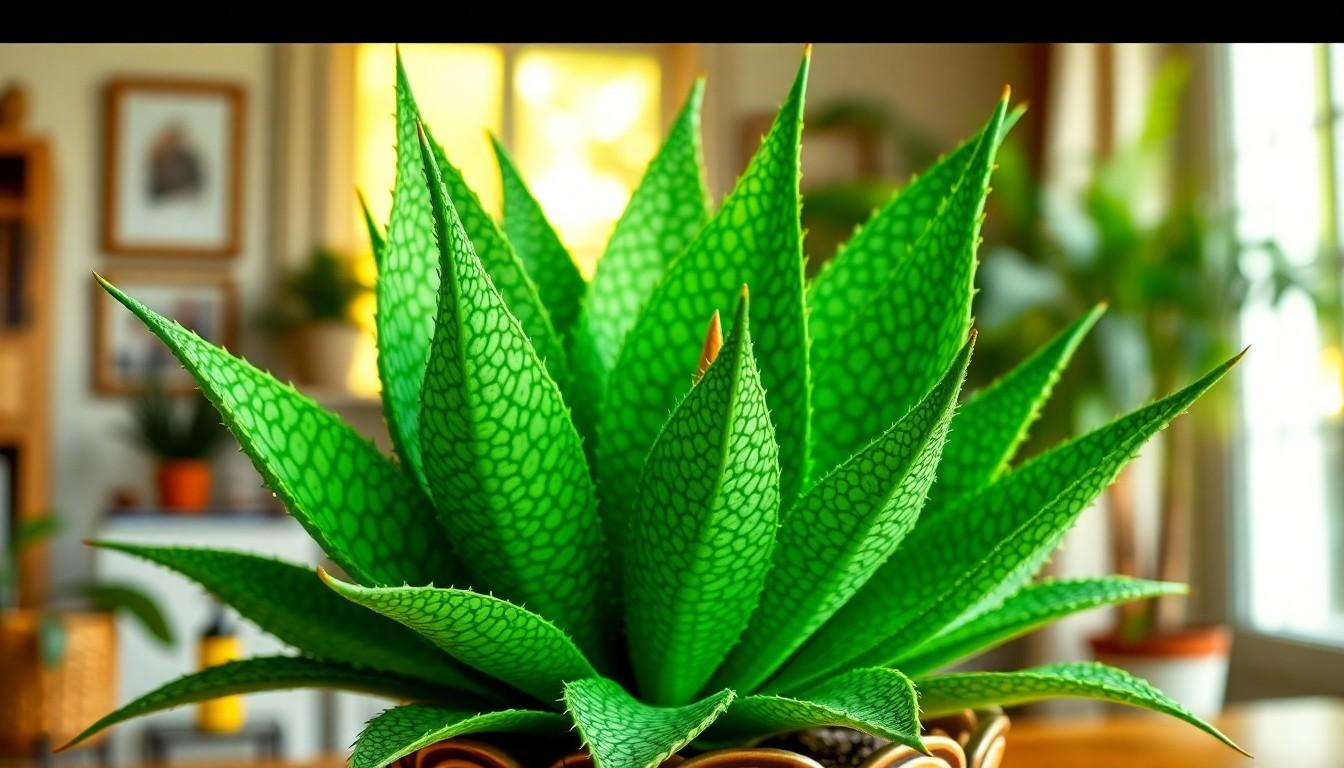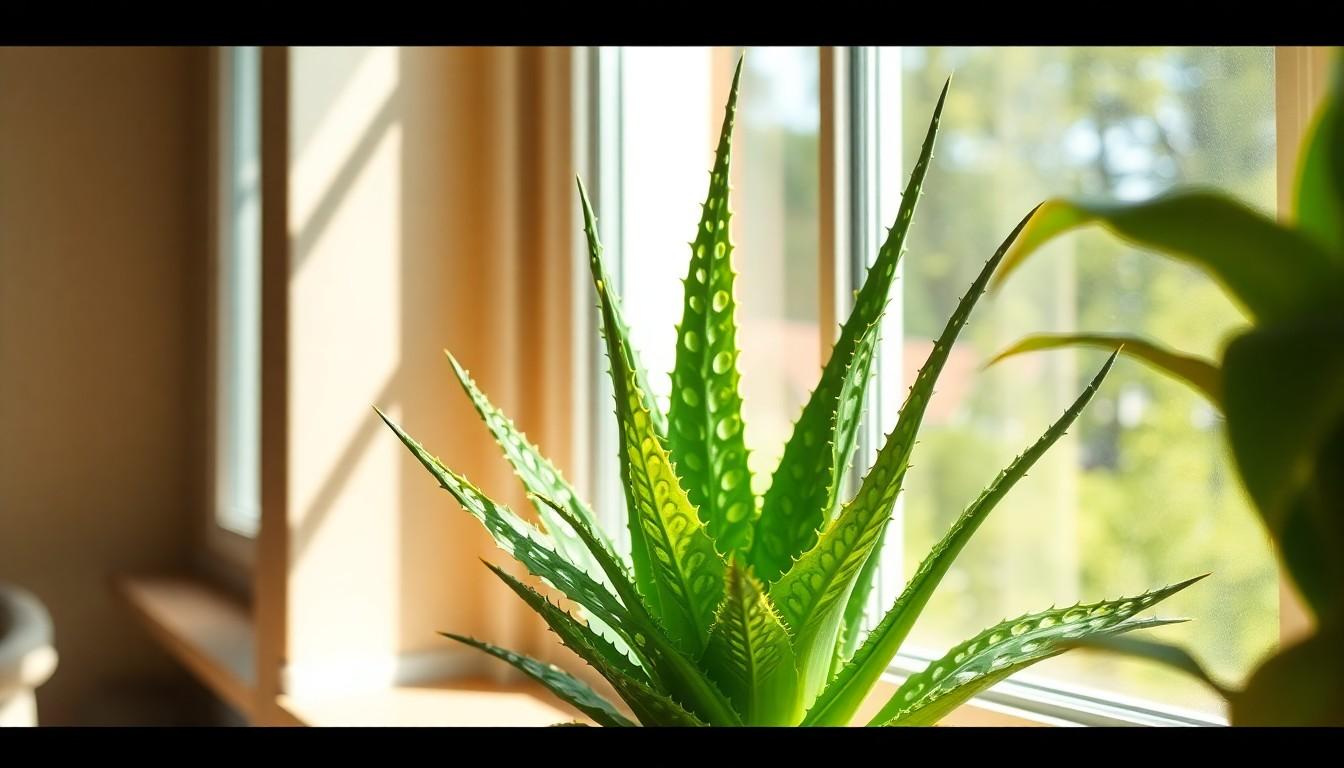The Best Fluffy Pancakes recipe you will fall in love with. Full of tips and tricks to help you make the best pancakes.

Lace Aloe Plant Care: The Ultimate Guide to Thriving Succulents
If you think caring for plants is just for the green thumbs, think again! The lace aloe plant is here to prove that even those with a notorious reputation for plant neglect can thrive. With its stunning rosettes and intricate leaf patterns, this succulent not only brings a touch of elegance to any space but also requires minimal effort to keep it happy.
Overview of Lace Aloe Plant
Lace aloe, scientifically known as Aloe aristata, boasts striking rosettes adorned with intricate leaf patterns. This succulent thrives in various indoor and outdoor conditions, making it a versatile option for plant enthusiasts. Individuals admire its unique texture and vibrant colors, adding character to any space.
Care requires minimal effort, emphasizing its suitability for busy lifestyles. A well-draining soil mix supports optimal growth, preventing root rot. They prefer bright indirect sunlight, thriving without direct sunlight exposure. Moderate watering keeps the plant healthy; allowing the soil to dry out between waterings prevents over-saturation.
This plant exhibits a compact growth habit, reaching an average height of 12 to 18 inches. During warmer months, it may produce lovely orange or red flowers, enhancing its aesthetic appeal. The lace aloe’s resilience against drought conditions makes it a popular choice for xeriscaping.
With proper care, the lace aloe can flourish for many years, providing a source of enjoyment. This plant ranks high among succulents for its ease of maintenance and attractive appearance. Its ability to adapt to a range of environments further solidifies its status as a beloved houseplant among gardening novices and experts alike.
Ideal Growing Conditions

Lace aloe plants thrive under specific conditions that promote healthy growth. Providing the right environment significantly enhances their beauty and resilience.
Light Requirements
Bright indirect sunlight represents the optimal lighting for lace aloe. Direct sunlight can scorch the delicate leaves, while insufficient light can hinder growth. Placing the plant near a window with filtered light works well. During the growing season, ensuring at least six hours of light per day supports vibrant growth and flower production. Observing the plant’s response to light will guide adjustments, ensuring it flourishes in a well-lit space.
Temperature and Humidity
Temperatures between 60°F and 80°F create an ideal environment for lace aloe. Exposing the plant to temperatures below 50°F can lead to stress and potential damage. When it comes to humidity, lace aloe prefers dry conditions, making it suitable for most indoor climates. High humidity may promote rot and disease, so maintaining moderate levels encourages growth. They adapt easily to fluctuating temperatures, making them excellent choices for various settings.
Watering Guidelines
Lace aloe requires careful watering to thrive, balancing between dryness and moisture. Ensuring soil is dry before watering again promotes healthy growth.
Frequency and Amount
Watering typically occurs every 2 to 3 weeks. Water thoroughly until it drains from the bottom, ensuring moisture reaches the roots. During the winter months, reduce watering frequency as the plant enters dormancy, allowing the soil to dry out more between waterings. Overwatering can lead to root rot, so adjusting based on the season is crucial.
Signs of Overwatering and Underwatering
Recognizing signs of overwatering includes yellowing leaves, wilting, or mushy roots. If the leaves become shriveled or dry, underwatering might be the culprit. Observing these signs helps manage watering effectively, fostering a healthy environment for the lace aloe. Proper attention ensures the plant remains vibrant and resilient.
Soil and Fertilization
Lace aloe thrives with the right soil and fertilization practices. Choosing the correct growing medium significantly contributes to the plant’s overall health.
Best Soil Mix for Lace Aloe
A well-draining soil mix is essential for lace aloe. Incorporating cactus or succulent potting soil ensures proper drainage and prevents rot. Adding perlite or coarse sand improves aeration and helps maintain dryness. A combination of equal parts potting soil and perlite creates an ideal environment. This mixture allows excess water to drain quickly while retaining enough moisture during watering.
Fertilizing Schedule and Tips
A light fertilization routine supports lace aloe’s growth. Using a balanced, water-soluble fertilizer during the growing season promotes healthy development. Fertilizing every 4 to 6 weeks provides necessary nutrients without overwhelming the plant. It’s best to dilute the fertilizer to half-strength, as overly concentrated solutions can cause damage. Avoid fertilizing during winter dormancy since the plant’s needs diminish. Observing the plant’s response to fertilization helps gardeners adjust as needed.
Common Pests and Diseases
Lace aloe can encounter various pests and diseases, impacting its health. Identifying these issues early ensures proper care and treatment.
Identification and Prevention
Mealybugs frequently invade plants like lace aloe, appearing as white, cotton-like clusters on leaves. Aphids may also appear, often found in colonies on new growth. Observe any signs of sticky residue on leaves, which can indicate a pest problem. Prevent these infestations by maintaining good air circulation and avoiding overwatering, as damp conditions attract pests. Regularly inspecting the plant keeps issues at bay. Additionally, using neem oil or insecticidal soap provides a natural defense against these pests.
Treatment Options
Treating mealybugs involves removing them manually and applying neem oil for thorough coverage. Insecticidal soap also works effectively against infestations. For aphids, a strong stream of water can knock them off the plant. Following up with treatment ensures these pests don’t return. Neem oil can be reapplied every 7 to 14 days for ongoing prevention. Fungal issues like leaf spot can arise due to high humidity, so removing affected leaves aids recovery. Adjusting watering practices and improving air circulation helps prevent future fungal problems.
Conclusion
Caring for a lace aloe plant is a rewarding experience that combines beauty with simplicity. By providing the right amount of light and water along with a well-draining soil mix, anyone can enjoy the vibrant colors and unique textures this plant offers. Its resilience makes it an excellent choice for both novice and experienced gardeners.
With attention to its needs and prompt action against pests or diseases, the lace aloe can thrive for many years. This plant not only enhances any space but also brings a sense of accomplishment to those who nurture it. Embracing the care of a lace aloe will undoubtedly lead to a flourishing addition to any plant collection.
